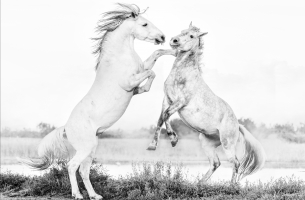Many photographers seem to feel that if you’re not getting an amazing image every day, it’s a wasted day. That’s just not the case with wildlife photography. One of the fundamental challenges is that nothing is guaranteed – whether you’ll get a sighting, the right weather or enough light. So you need to previsualise what you want, but at the same time you have to be enormously reactive and work with what you’ve got – almost like previsualising in real time. You see the beam of light come down and you’re immediately thinking, what can I do with that, what am I looking for? Rather than going out on a trip with four very specific images I want to take, I’m constantly previsualising a whole range of what should work within the parameters of a theme. And even if you don’t get a decent photograph from this approach, you’ll still learn something that you can take forward and apply to your future work.
When I think about my wildlife photography, there are two key elements – the fine-art side and the authentic experience of the animal interaction – and they have to be hand in hand, otherwise the image is lacking. On the Camargue horses shoot with the pre-production version of the Z 7II, I was very clear about the feel I wanted to achieve. You usually see images of the horses running on the beach and into the water, but that’s not a natural behaviour for them – they have to be chased. I wanted to photograph them in their natural habit, doing what they naturally do. Left to their own devices, they’ll stand pretty much still all day in the salt marshes. So I wanted to show them in these beautiful marshlands, being their calm, docile selves rather than that contrived, crashing through the waves thing.
You hear a lot of photographers saying they put their cameras down in the middle of the day, the reason being that the shadows get very harsh when the sun is high. But I’m a big believer in there being no such thing as bad light, only different light, so I took these shots precisely in the middle of the day to benefit from the bright highlights and dark shadows. No camera has an infinite dynamic range, so if you expose for highlights, you’re inevitably going to allow the shadows to clip. I captured one particular image of a horse with its face lit by the sun, creating a black background that allowed all the distractions to disappear into a Caravaggio-style void, and I think it works really well. Many people do this in post-production but for me photography is about photography, not about editing. Editing is incredibly skilful and an art in its own right, but it’s not necessarily my art. So I try to do as much as possible in-camera.



